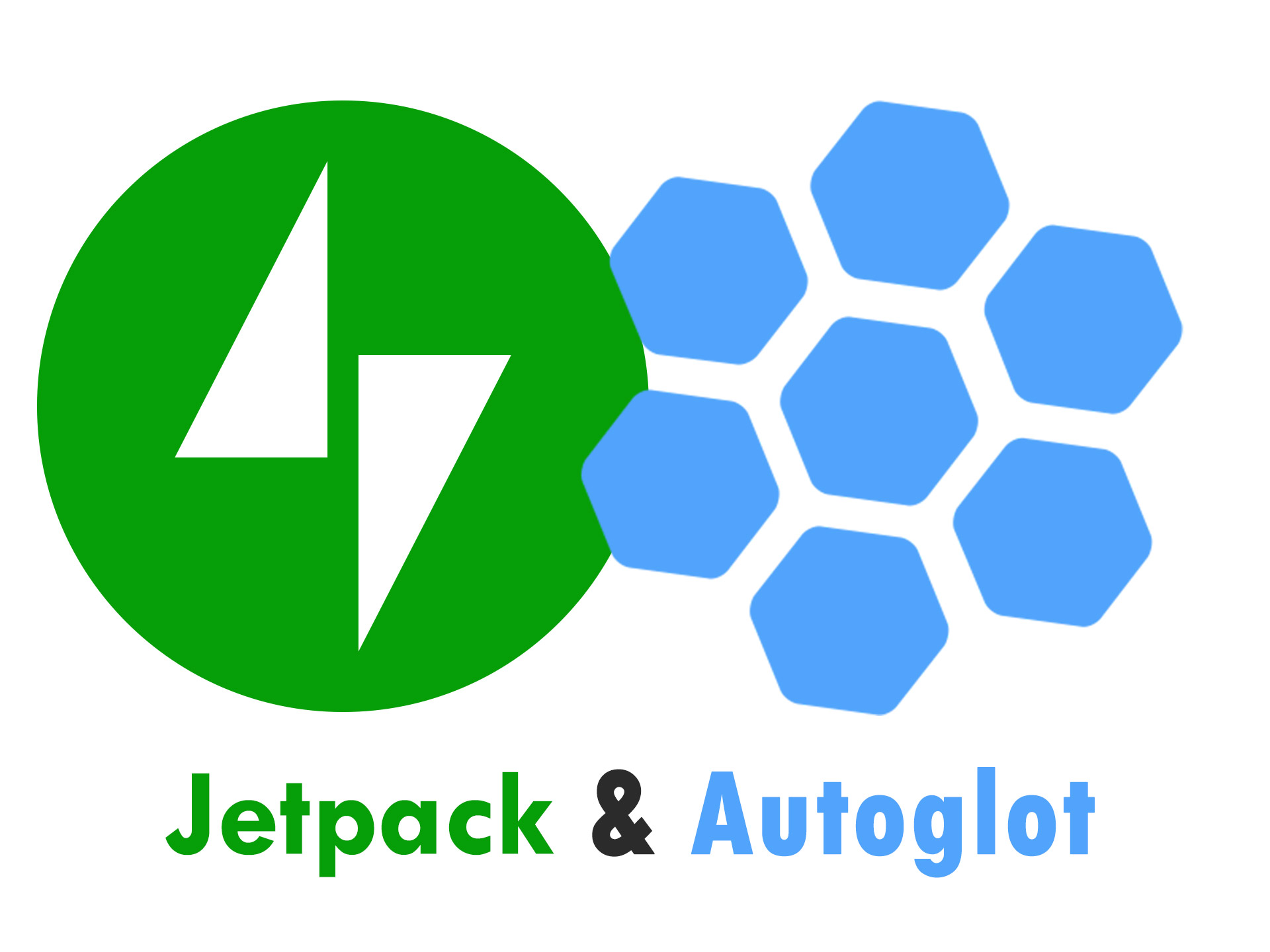
Multilingual websites provide a valuable opportunity to reach a broader audience and increase global traffic. By offering content in multiple languages, businesses can cater to diverse customer bases, boosting visibility and engagement. As the internet becomes increasingly global, the ability to communicate in several languages can set a website apart from its competitors. Effective translation and localization of website content are essential for making a meaningful impact in international markets.
Introduction: The Benefits of Multilingual Websites
The Role of SEO in Multilingual Websites
Search engine optimization (SEO) plays a significant role in attracting international traffic. SEO ensures that a website is discoverable by search engines, which helps to drive more visitors to the site. When it comes to multilingual websites, SEO strategies must be adapted to target each language and market individually. This includes translating not only the website’s content but also critical SEO elements, such as page titles, meta tags, and sitemaps. Without proper translation of these SEO components, a multilingual website might not rank effectively in search results for each language.
Introduction to JetPack Plugin
JetPack is a popular WordPress plugin known for its wide range of features, including tools for SEO, security, and performance optimization. One of its key functions is generating XML sitemaps, which help search engines understand the structure of a website. JetPack also provides some basic SEO capabilities, but it lacks comprehensive multilingual support. For websites aiming to reach international audiences, translating JetPack’s SEO elements is essential for improving global rankings. This includes ensuring that page titles, meta descriptions, and sitemaps are available in multiple languages.
The Challenge of Managing Multilingual SEO with JetPack
The challenge with managing multilingual SEO in JetPack is the need for manual updates. Each time a page is translated, the corresponding SEO elements must also be translated, and the translated pages must be added to the XML sitemap. This process can be very time-consuming and difficult to manage, especially as the website grows and more languages are added. For businesses with limited resources, maintaining a multilingual SEO strategy manually can become overwhelming and inefficient.
The Solution: Autoglot Plugin
Fortunately, tools like the Autoglot WordPress translation plugin can automate much of this process. Autoglot simplifies the translation of content and SEO elements, including titles, meta tags, and sitemaps, making it a valuable addition for multilingual websites.
With Autoglot, website owners can streamline their international SEO efforts, saving time and ensuring that their content is fully optimized for global search engines.
See also: Multilingual SEO: 5 Best Practices to Remember
The Importance of International SEO
The Need for International SEO
International SEO is essential for any website aiming to reach a global audience. As the internet becomes more interconnected, businesses must optimize their content for users across different countries and languages. Without international SEO, a website may struggle to rank in search engines in regions where it aims to expand its presence. By targeting multiple languages and markets, international SEO increases a website’s visibility and helps attract relevant traffic from around the world.
Translating SEO Elements for Global Success
Effective international SEO requires not just translating the content of a website, but also ensuring that key SEO elements are correctly localized. These elements include page titles, meta descriptions, and URL structures, all of which are crucial for search engine rankings. Translated page titles and meta tags ensure that search engines display relevant, localized information to users in different languages. If these elements are not accurately translated and optimized, search engines may fail to understand the website’s relevance to a particular region or language, leading to missed opportunities.
The Role of Page Titles and Meta Tags
Page titles and meta tags serve as the foundation of a website’s SEO strategy. Page titles are one of the first things search engines analyze when indexing a page, and they play a major role in determining search rankings. Similarly, meta descriptions provide search engine users with a brief summary of the page’s content, influencing click-through rates. For multilingual websites, these SEO elements need to be translated for each language version of the page to ensure maximum visibility in each target market.
The Importance of Sitemaps in International SEO
XML sitemaps are another important component of international SEO. A sitemap is essentially a map for search engines, helping them understand the structure of a website and how its pages are related. For multilingual websites, sitemaps must include all translated pages and their respective language versions. Failure to include these translated pages in the sitemap can lead to search engines overlooking them, reducing the overall reach of the site in various language markets.
Ensuring Consistency Across Languages
Consistency across all SEO elements is key to maintaining a strong international SEO strategy. All translated pages, titles, meta tags, and sitemaps must be updated whenever the original language content changes. Without proper management, inconsistencies can occur, resulting in poor SEO performance and a fractured user experience across different language versions of the site. Having a streamlined process to handle these updates ensures that the site remains fully optimized for international search engines.
International SEO is crucial for reaching global audiences. It requires the translation and optimization of key SEO elements like page titles, meta tags, and sitemaps. Proper management of these elements helps to boost a website’s visibility and search rankings in multiple languages.
Read more: How To Translate WordPress Page Title and Meta Tags For Multilingual Website?
Overview of JetPack Plugin
What is JetPack?
JetPack is a versatile plugin for WordPress, offering a suite of features that enhance a website’s performance, security, and SEO capabilities. Developed by Automattic, the creators of WordPress, JetPack is designed to simplify many aspects of website management, making it an attractive option for website owners seeking an all-in-one solution. It integrates seamlessly with WordPress, offering easy setup and access to powerful tools, including analytics, security scans, and SEO features.
Key Features of JetPack
JetPack provides several important features that improve website functionality and visibility. Among its most notable capabilities is the automatic generation of XML sitemaps. These sitemaps help search engines index a website’s pages more efficiently, ensuring that content is discovered and ranked properly. Additionally, JetPack includes tools for image optimization, site backups, and performance enhancements, making it a comprehensive tool for website owners.
JetPack also offers a number of SEO-related features, including options for optimizing site titles and meta descriptions. This helps to ensure that a site’s content is visible in search engine results and is properly categorized. However, while JetPack provides essential SEO tools, it does not provide native support for multilingual websites, which can limit its effectiveness for global SEO efforts.
Benefits of JetPack for SEO
JetPack’s SEO tools provide a solid foundation for improving website visibility. By optimizing page titles, meta descriptions, and generating sitemaps, JetPack can help increase a website’s presence in search engine results pages (SERPs). Its automatic XML sitemap generation ensures that all pages are included, making it easier for search engines to index content. This feature is particularly useful for websites that regularly publish new content, as it ensures that pages are updated and discoverable.
Another notable benefit of JetPack is its ability to enhance page load speed through image optimization. Faster page loading times are a critical factor in SEO rankings, as search engines like Google consider load times when determining search results. JetPack automatically optimizes images, ensuring that they load quickly without compromising quality.
Drawbacks of JetPack for Multilingual Websites
While JetPack provides valuable SEO tools, it has limitations when it comes to managing multilingual content. The plugin does not natively support translation for page titles, meta tags, or sitemaps, making it difficult to optimize these SEO elements for multiple languages. Website owners using JetPack for multilingual sites must manage translations manually, which can be time-consuming and error-prone, especially as the website grows.
For multilingual websites, the absence of automatic translation for SEO elements can be a significant challenge. Website owners must invest considerable time and effort to translate titles, meta tags, and other SEO elements for each language version of the site.
JetPack offers powerful features for website optimization, including SEO tools, XML sitemaps, and image optimization. However, its limitations in handling multilingual SEO make it less suitable for websites targeting global audiences, especially without additional tools or manual intervention.
Read more: Jetpack – Essential Security and Performance for WordPress
Setting Up JetPack Plugin for International SEO
Installing JetPack Plugin
To start using JetPack, you first need to install and activate the plugin on your WordPress site. Navigate to the WordPress dashboard, click on “Plugins” and select “Add New.” In the search bar, type “JetPack” and click “Install Now” next to the JetPack plugin. Once the installation is complete, click “Activate” to enable JetPack on your site. Following activation, you’ll need to connect JetPack to a WordPress.com account to unlock its full range of features.
Connecting JetPack to WordPress.com
After activation, JetPack requires a connection to your WordPress.com account. This allows JetPack to provide additional features like security enhancements, backups, and SEO tools. To connect your site, click on the “Connect JetPack” button and follow the on-screen prompts to log in to your WordPress.com account. If you don’t already have one, you can create an account during this process. Once connected, JetPack is ready to be configured.
Configuring JetPack for SEO Features
JetPack offers several features to enhance SEO, which can be configured after installation. Go to the JetPack settings page in your dashboard, where you’ll see various options for SEO tools. Enable the “Site Verification” feature to allow search engines to easily index your site and the “SEO Tools” option to manage SEO-friendly page titles and meta descriptions. These features ensure that your content is visible to search engines and optimized for higher rankings.
Enabling XML Sitemap Feature
JetPack includes an automatic XML sitemap generator, which is essential for international SEO. XML sitemaps provide search engines with a map of all the pages and posts on your site. To activate this feature, go to JetPack’s settings, click on “Traffic,” and ensure that the “XML Sitemap” option is enabled. This will allow JetPack to automatically generate and update a sitemap every time new content is added or existing content is modified.
International SEO Setup
For international SEO, it’s essential to properly set up multilingual capabilities. JetPack doesn’t automatically handle the translation of page titles and meta tags, which are critical for SEO. Ensure that you manually update page titles, meta descriptions, and other SEO elements in each language version of your content. This is necessary for each page, post, and category to be indexed correctly in multiple languages. You will also need to manually add translated pages to the JetPack-generated sitemap to make sure they are indexed by search engines.
The Role of JetPack in Multilingual SEO
While JetPack provides important SEO features, it does not fully support multilingual SEO out of the box. For a multilingual website, you will need to manually manage page titles, meta descriptions, and sitemaps for each translated page. Without additional plugins or manual intervention, JetPack’s features alone are insufficient for a seamless multilingual SEO experience.
JetPack is easy to install and offers essential SEO tools like XML sitemaps, but it does not provide full multilingual SEO functionality. Setting up JetPack requires enabling SEO tools and XML sitemaps, as well as manually updating translated page titles and meta descriptions to ensure your site is optimized for international SEO.
See also: Jetpack WordPress repository
Translating Page Titles, Meta Tags, and Sitemaps for International SEO
Translating Page Titles and Meta Tags
For multilingual SEO, translating page titles and meta tags is essential to ensure proper indexing in each target language. Page titles and meta tags play a crucial role in how search engines rank and display your content. Without translating these elements, search engines may not correctly understand the context of your pages in different languages, which can affect search engine rankings. To translate page titles and meta tags, you need to access the SEO settings for each page or post and manually input the translations for titles and descriptions.
It is important to use relevant keywords in each translated title and meta tag. While translating, focus on ensuring that the translated content aligns with local search behaviors. Search engines prioritize content that is optimized with language-specific keywords, which can improve your site’s visibility in search results for users in different regions. You’ll also want to ensure that your titles and meta descriptions are concise, clear, and accurately reflect the content on each page in its respective language.
Updating Titles and Meta Tags as Content Changes
Once you have translated the page titles and meta tags, it’s essential to update them if the original content changes. If the page’s content is revised or modified in any way, the translated page titles and meta descriptions must also be updated to reflect those changes. Neglecting to update these SEO elements could result in outdated or incorrect information being displayed in search results, leading to confusion for search engine crawlers and users alike. This process, while essential for maintaining accurate and optimized content, can become cumbersome, especially as your site grows and more translations are added.
Adding Translated Pages to JetPack’s XML Sitemap
JetPack generates XML sitemaps that help search engines crawl and index your content. However, when you add translated pages, they won’t automatically appear in the sitemap. To ensure that these pages are indexed, you must manually add the translated pages to JetPack’s sitemap. This means editing the XML sitemap manually or using a plugin that supports multilingual sitemap management. Failure to include translated pages in the sitemap can lead to these pages being missed by search engines, potentially limiting their visibility and reach.
The Challenge of Manual Management for Large Websites
Manually managing translations for page titles, meta tags, and sitemaps can quickly become overwhelming, especially for larger websites. As your website expands and you add more pages in multiple languages, the task of keeping track of translated content, titles, and meta tags can become difficult to manage. You’ll need to ensure that each new page, post, and category is properly translated and updated in the sitemap to avoid SEO issues. This level of manual management increases the likelihood of human error, missed updates, and inconsistent translations, ultimately impacting your SEO performance.
Automating the Process with Autoglot
Using Autoglot to automate the translation of page titles, meta tags, and sitemaps simplifies the process significantly. Autoglot automatically translates these SEO elements along with the main page content, ensuring consistency across all languages. Additionally, Autoglot seamlessly updates JetPack’s XML sitemap to include all translated pages, posts, categories, and tags. This eliminates the need for manual updates, saving time and reducing the risk of errors. By automating this process, Autoglot ensures that your multilingual SEO strategy is both efficient and effective.
Translating page titles, meta tags, and managing sitemaps are key elements for international SEO, but they require manual intervention, which can be time-consuming and error-prone. Using a solution like Autoglot can automate these tasks, ensuring accurate translations and streamlined SEO management across multiple languages.
See also: How to Add Translated Pages to WordPress Sitemap?
Using Autoglot Plugin for Seamless International SEO
Automatic Translation of SEO Elements
Autoglot offers a streamlined solution for translating SEO elements in Jetpack, including page titles, meta tags, and sitemaps. One of the key challenges of managing multilingual websites is ensuring that SEO elements such as titles, descriptions, and keywords are accurately translated. With Autoglot, these SEO elements are automatically translated alongside the main page content. This ensures that all critical metadata is properly localized for search engines in each target language, improving the SEO performance of your website globally.
Autoglot automatically translates page titles, meta descriptions, and other key SEO elements. By removing the need for manual translation of each SEO element, Autoglot saves valuable time and reduces the likelihood of errors. These translations are synchronized with the content of each page, ensuring that they match and remain relevant to the specific language and region. This automation helps you maintain consistency in your SEO strategy across all languages, without the need for manual updates each time content changes.
Seamless Integration with JetPack’s Sitemap
Autoglot enhances JetPack’s XML sitemap feature by automatically adding translated pages to your sitemap. When you add new pages or posts in different languages, Autoglot updates JetPack’s XML sitemap to include these translated versions. This ensures that search engines can easily crawl and index your multilingual content without requiring manual intervention. By automating the inclusion of translated pages in your sitemap, Autoglot ensures that your international SEO efforts are seamlessly integrated with JetPack’s powerful sitemap functionality.
The automatic addition of translated pages to the XML sitemap ensures that all your content is indexed properly. Without this feature, you would need to manually update the sitemap each time you add or translate content. This is not only time-consuming but also increases the risk of missing important pages from being indexed by search engines. Autoglot eliminates this issue by automating the entire process, allowing you to focus on other aspects of your site’s growth while maintaining a strong international SEO presence.
Time-Saving Automation for Multilingual Sites
Autoglot’s automation significantly reduces the time and effort required to manage multilingual SEO. Traditional methods of handling translations for SEO elements and sitemaps can be overwhelming, especially as your website grows. With Autoglot, you don’t need to manually update each page’s meta tags, titles, or add translated pages to the sitemap. This automated approach allows you to scale your multilingual SEO strategy efficiently, even as you add new content or languages to your site.
The time-saving features of Autoglot make it an ideal solution for large, multilingual websites. As your site expands, manually managing SEO for each language can become impossible to handle without a dedicated team. Autoglot takes care of these tasks automatically, freeing up resources for other aspects of your website’s growth and content creation. This ensures that your international SEO efforts remain consistent and effective, without the burden of manual maintenance.
Autoglot simplifies the process of managing international SEO by automatically translating SEO elements like page titles, meta tags, and updating JetPack’s XML sitemap. This time-saving automation ensures that your multilingual content is properly indexed and optimized for search engines, helping you maintain a strong global presence.
Read more: How to Automate Translation Process for WordPress?
Conclusion
Managing multilingual SEO can be a challenging task, but with the right tools, it becomes much more efficient and effective. Translating page titles, meta tags, and managing sitemaps are crucial for ensuring that your website is properly indexed and optimized across different languages. While manual translation methods can work for small websites, they quickly become overwhelming and error-prone as your site grows.
- Autoglot offers a seamless solution for automating the translation of SEO elements, making the process much faster and less prone to mistakes. By automating the translation of page titles, meta tags, and updates to JetPack’s XML sitemap, Autoglot significantly reduces the time and effort required for multilingual SEO management. This automation ensures that all your translated content remains consistent, accurate, and fully optimized for search engines, helping to improve your rankings globally.
- Using Autoglot not only saves time but also ensures that your multilingual SEO strategy is scalable. As your website expands, Autoglot handles the growing demands of multilingual SEO, making it easier to manage content across multiple languages. By eliminating the manual work of updating SEO elements and adding pages to sitemaps, Autoglot allows you to focus on other important aspects of your website’s growth.
In conclusion, for websites aiming to target international audiences, investing in a solution like Autoglot is invaluable. It helps you streamline the translation process, improve your website’s visibility in search engine results, and maintain an effective SEO strategy without the complexities of manual updates. Autoglot provides a more efficient, error-free, and scalable approach to international SEO, ensuring that your multilingual website remains competitive in global search rankings.



